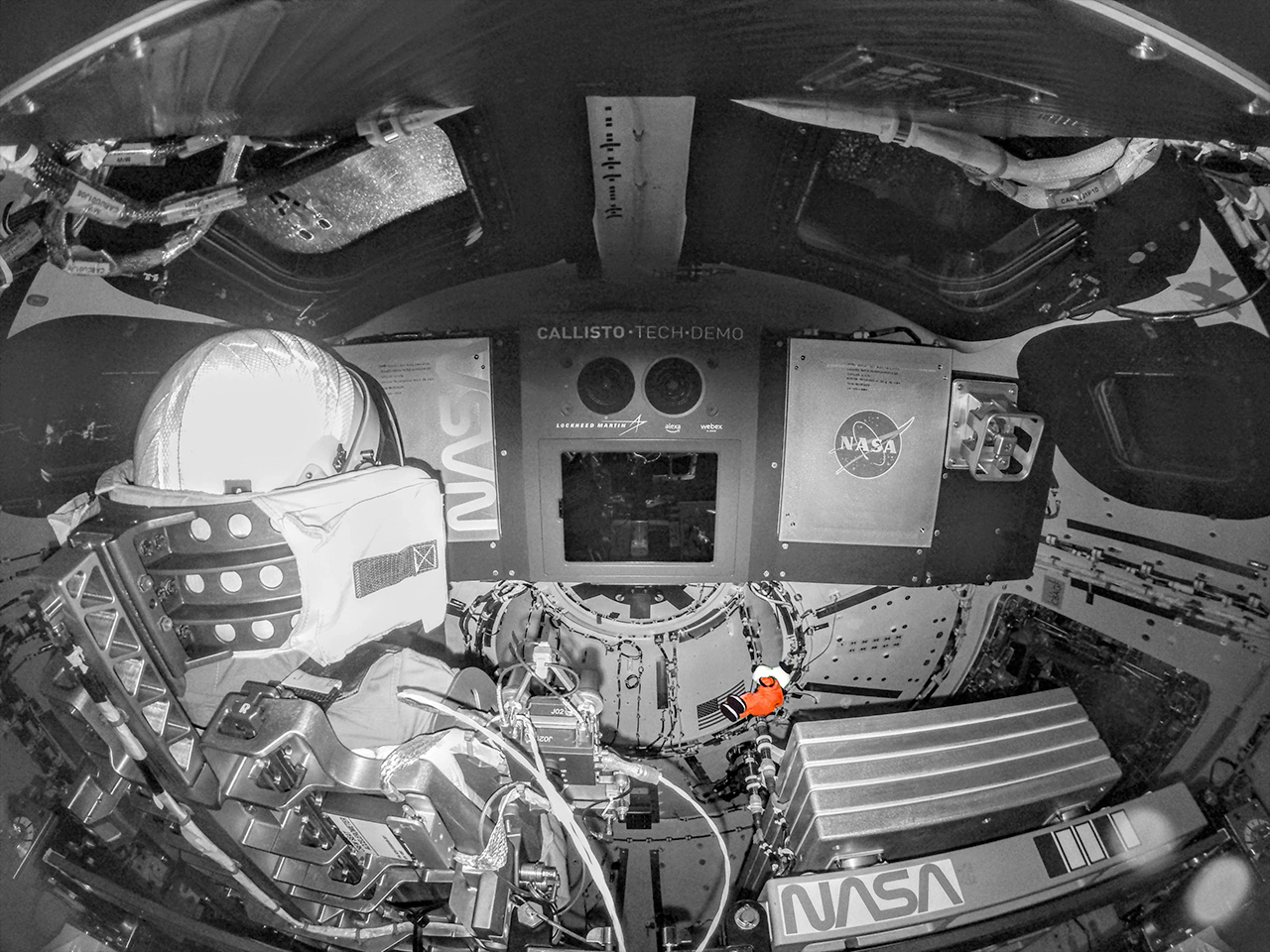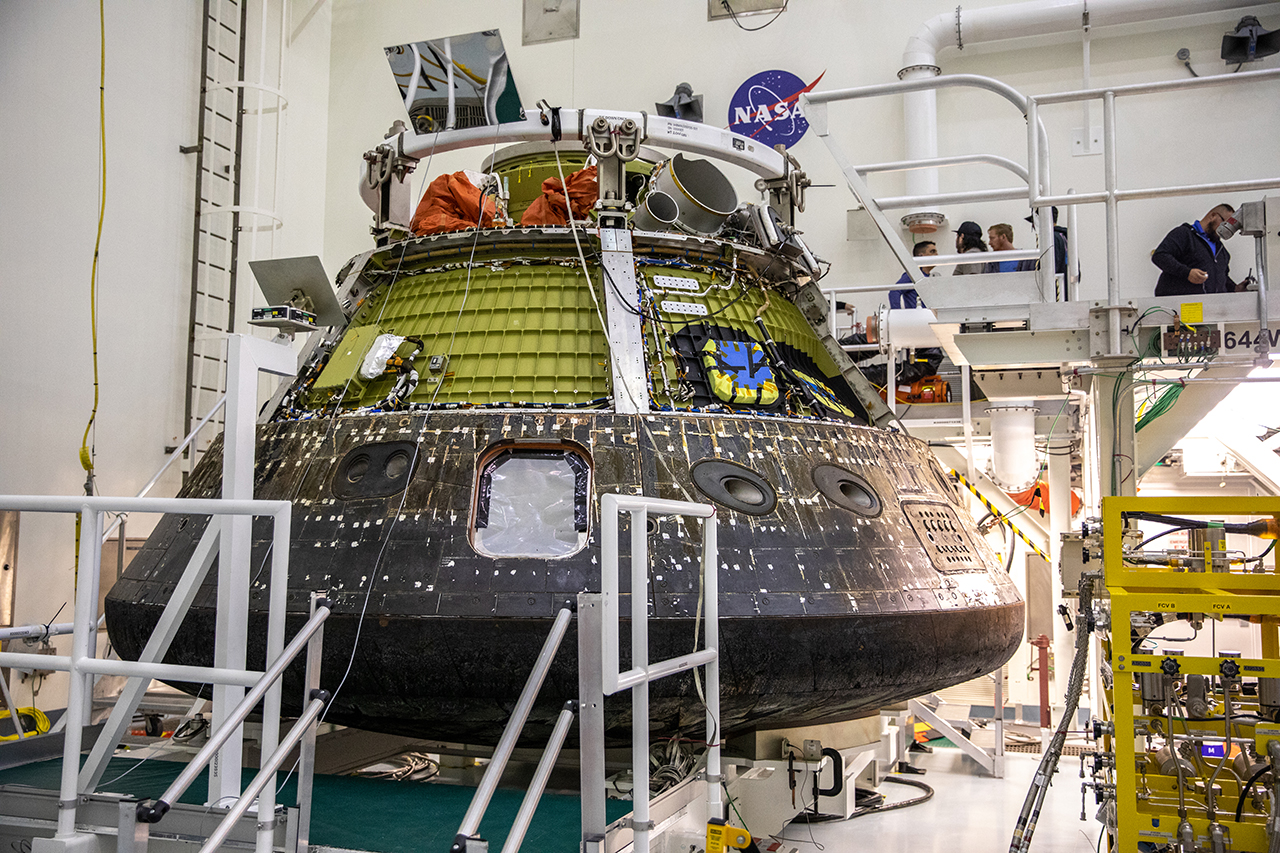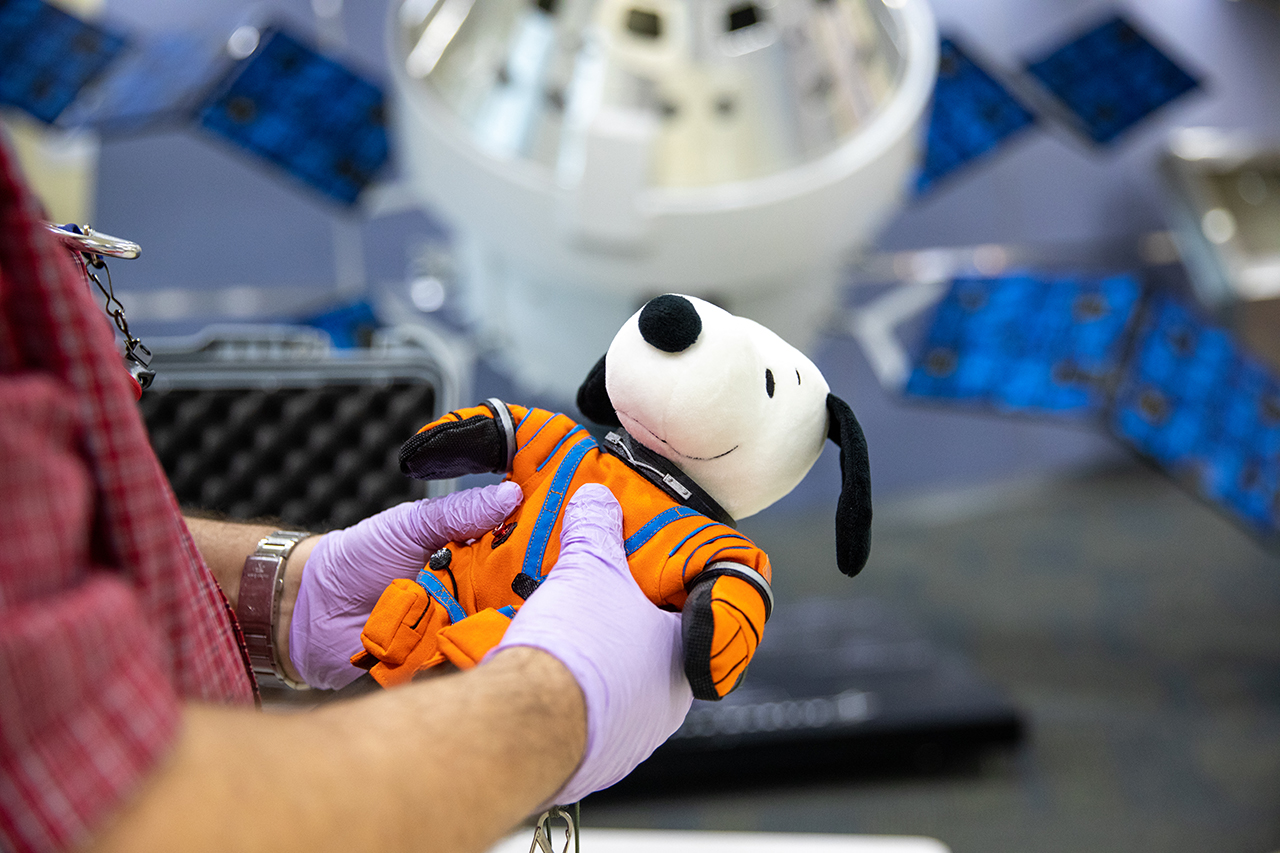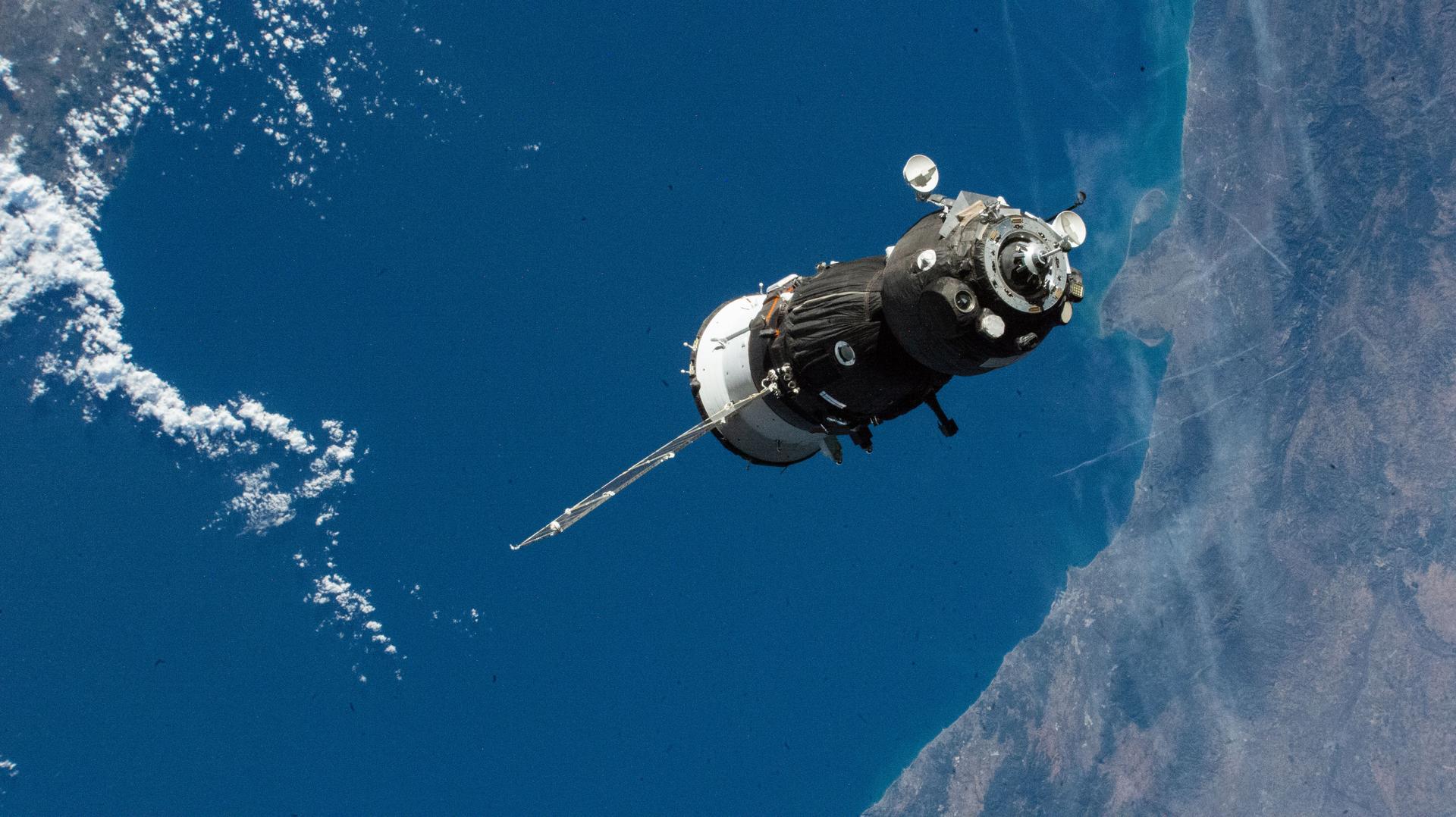Snoopy comes home: NASA photos show 'zero-g indicator' after trip to the moon
The plush version of Charles Schulz' comic strip beagle was retrieved from the Orion capsule that flew it to the moon and back.

Snoopy has come home.
The "world famous astronaut" splashed down aboard NASA's Artemis 1 Orion spacecraft in December, but it was not until last week that Snoopy — or rather a plush version of the comic strip beagle — was ready to be removed from the flown-to-the-moon capsule. NASA photos taken on Jan. 5 show the doll being carefully handled before being packed back into its carry case.
The images are the first time that the doll has been seen in close-up since it was launched on the Artemis I mission on NASA's first Space Launch System (SLS) rocket on Nov. 16, 2022. During the 25.5-day flight, which logged more than 1.4 million miles (2.3 million km) looping around the moon, Snoopy was only seen at a distance, floating at the end of his leash (otherwise known as a tether) at the bottom of Orion's crew cabin as viewed from a camera mounted on the aft wall.
Related: NASA opens hatch of Artemis 1 Orion spacecraft (photo)
The custom-made doll served as the mission's "zero-g indicator," a tradition that was borrowed from the Russian space program that uses toys to signal when the spacecraft has entered the microgravity environment of space.
The new photos show Snoopy is no worse the wear for the trip. Sporting a wide smile, the plush flew to the moon and back in a miniature version of NASA's Orion Crew Survival System (OCCS) pressure suit, made out of some of the same materials used to produce the real garments. A full-size suit was also tested on Artemis I, as worn by "Commander Moonikin Campos," an instrumented mannequin named after an Apollo 13 engineer.
After landing off the coast of Mexico's Baja California Peninsula on Dec. 11, Snoopy and Commander Campos stayed inside the Orion capsule as it was transported by truck from Naval Base San Diego in California to the Kennedy Space Center in Florida. The spacecraft was delivered to NASA's Multi-Payload Processing Facility on Dec. 30.
Breaking space news, the latest updates on rocket launches, skywatching events and more!
Engineers have now removed some of Orion's exterior back shell panels and have opened the hatch as the capsule undergoes post-flight study and analysis.
The Artemis 1 mission was primarily flown as a test of the spacecraft's heat shield, proving it could safely return from the moon and reenter Earth's atmosphere. The flight also verified that Orion's systems were ready to support flying astronauts as planned for the Artemis 2 mission targeted for launch in late 2024 or 2025.
Though this was Snoopy's first flight to the moon as a zero-g indicator, his history with NASA dates back the Apollo program when illustrator Charles Schulz agreed to the character symbolizing NASA's safety culture and mission success. The Apollo 10 lunar module was named "Snoopy" (the command module was "Charlie Brown") and the "Silver Snoopy" is one of the highest honors NASA astronauts award to employees and contractors for their support bringing them home safely.
In 2018, NASA and Peanuts Worldwide expanded the use of Snoopy and the entire Peanuts gang as new mascots for science, technology, engineering and mathematics (STEM) education and the space agency's deep space missions.
Follow collectSPACE.com on Facebook and on Twitter at @collectSPACE. Copyright 2023 collectSPACE.com. All rights reserved.

Robert Pearlman is a space historian, journalist and the founder and editor of collectSPACE.com, a daily news publication and community devoted to space history with a particular focus on how and where space exploration intersects with pop culture. Pearlman is also a contributing writer for Space.com and co-author of "Space Stations: The Art, Science, and Reality of Working in Space” published by Smithsonian Books in 2018.
In 2009, he was inducted into the U.S. Space Camp Hall of Fame in Huntsville, Alabama. In 2021, he was honored by the American Astronautical Society with the Ordway Award for Sustained Excellence in Spaceflight History. In 2023, the National Space Club Florida Committee recognized Pearlman with the Kolcum News and Communications Award for excellence in telling the space story along the Space Coast and throughout the world.




